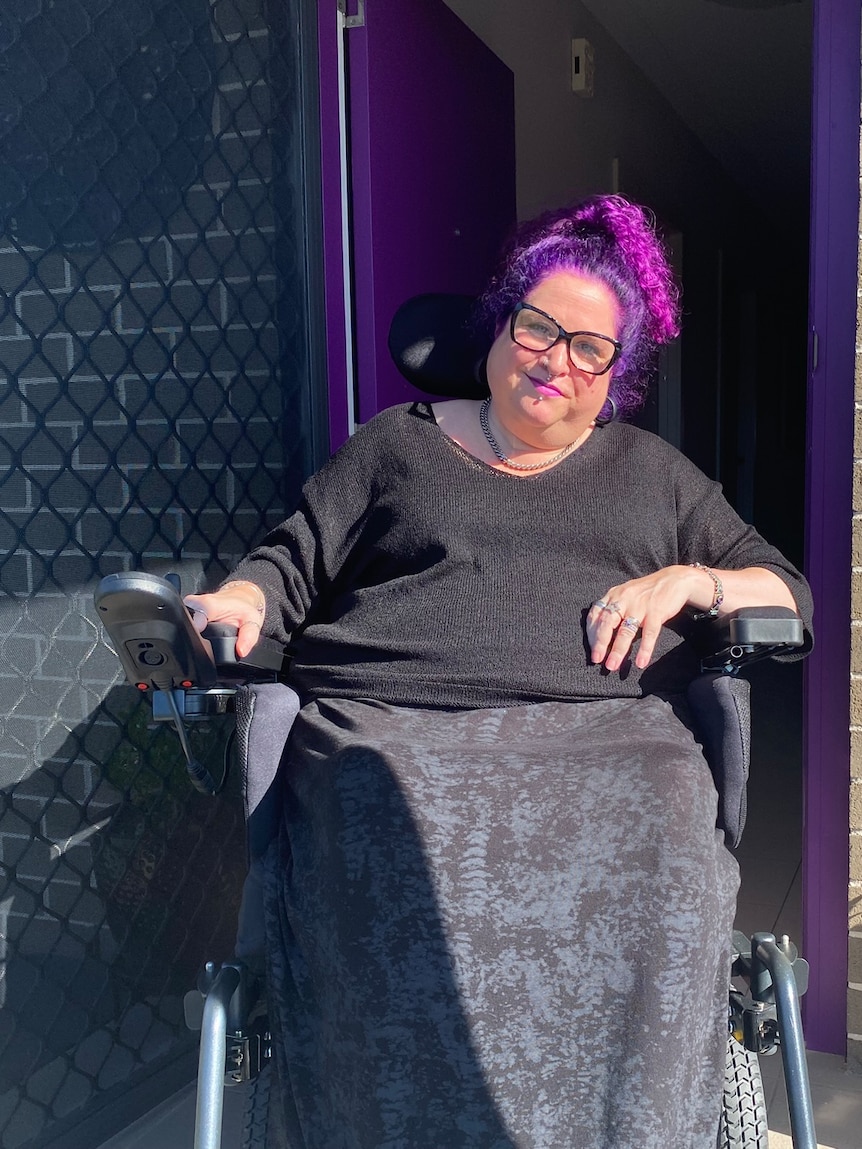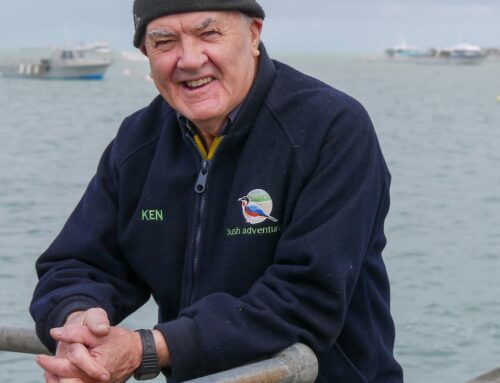As Australian governments urgently build new homes to deal with the national housing shortage, there are concerns many of those new builds won’t meet the needs of our ageing population.
But the introduction of mandatory design standards for all new builds — aimed at improving accessibility for people living with disability — could solve that problem.
All jurisdictions except New South Wales and Western Australia have signed up to the mandatory Livable Housing Design Standard as part of the National Construction Code.
The code specifies seven minimum standards to ensure all new homes are accessible with modifications including step-free entrances and showers and wider doors and corridors that can accommodate wheelchairs and walking aids.
Former Disability Royal Commissioner Rhonda Galbally said it was crucial for New South Wales and Western Australia to sign up.
“It adds just about nothing to the cost of new builds, and it makes the community so much more accessible,” Dr Galbally said.
“That’s why it’s so bewildering that WA and NSW haven’t come on board with this.”
The Australian Building Codes Board estimates the additional cost to implement the minimum accessible design standards is between $2,900 and $4,400 per home, depending on the type of dwelling.
While the standards are intended to provide people under the age of 65 who live with disability more opportunities to live independently in the community, they also could enable older people to live at home for longer.
Dr Galbally said a lack of access to suitable housing left “very grim” choices for people with disabilities.
“One choice would be to go into segregated housing or group homes, which is very undesirable,” she said.
“Or they might go into nursing homes, which is really inappropriate.”
Dr Galbally said most people would prefer to live in their own homes in the community, which was why nationally consistent accessibility standards were crucial.
‘Impossible to find’ a suitable house
Sydney woman V Samuela knows how hard it is to find suitable accommodation when you are living with disability.
After suffering two strokes in the space of three days 17 years ago, Ms Samuela struggled to find a home that suited her accessibility needs.
Ms Samuela said she was “bounced around” between different support accommodation facilities while she waited for a decade on the public housing waiting list.
“There was a shortage of houses that were modified and accessible for me to use. [Choices] were very very limited,” she said.
“They were impossible to find.”
Ms Samuela’s first public housing home had been modified with a ramp entrance and an accessible shower but because of the original cramped design, she said she felt like she “was in a pinball machine”.
After another year or so, she moved into her house near Campbelltown, in Sydney’s south-west, which met most of her accessibility needs.
“We fell in love the second we saw it basically,” she said.
“I found myself doing big circles [in my wheelchair] in the living room. That was quite a liberating feeling.”
After many years living apart, Ms Samuela now shared her house with her husband, and was grateful for the independence she had.
“I managed to stay out of a nursing home,” she said.
“I didn’t want to be in accommodation — my husband was visiting me at the home but there was no privacy.”
Push to ‘future-proof’ housing
Research released this week by the Summer Foundation, which helps young people with disability to live in the community instead of in residential aged care, shows industry members from the design and construction sector believe implementing mandatory national standards is achievable.
The organisation’s CEO, Di Winkler, said “it’s time for NSW and WA to get on board so that there’s national consistency in how we build housing.”
“Both the recent NDIS review and the Disability Royal Commission recommended that both jurisdictions adopt the minimum standards as soon as possible,” Dr Winkler said.
She said fit-for-purpose accessible housing was also important for Australia’s ageing population.
“The features we’re talking about are not a big ask and we’ll just end up with better quality housing that is future-proof,” she said.
By 2050, about a quarter of all Australians will be aged over 65, with the proportion of the younger population declining, according to Australian Human Rights Commission and World Bank projections.
In a statement, the WA government said its decision not to sign up to the accessible design building code came after consultation with industry and stakeholders.
The government spokesperson said it did not want to make “building new homes more complex or expensive at this time”.
A NSW government spokesperson said it was actively monitoring policy settings and that delivering better homes was a priority.
The Summer Foundation is calling for more training for builders and architects from peak representative bodies, including the Master Builders Association and the Housing Industry Association.
It wants industry members to be supported by peak bodies with the changes and the distribution of consistent resources and practical guidance.
“It’s things like case studies, and exemplars of accessible design, including drawings and templates, lists of compliant products and suppliers, and then workshops, professional development opportunities, and just how-to materials,” Dr Winkler said.
‘We just want to belong’
The lack of accessible housing stock was still frustrating for Ms Samuela, even though she loved her home.
For her, visiting family and friends had been “almost impossible”, as their homes were largely inaccessible.
She said she also felt “embarrassed” and anxious about scratching doorways or leaving marks on the wall from her wheelchair.
“I hate that feeling like I’m a burden or feeling that people are going out of their way to make all these adjustments,” she said.
Ms Samuela hoped there would soon be national standardisation of minimum accessibility requirements for new homes.
“When things are accessible, it automatically gives you a freedom to just relax and not always have to be on guard,” she said.
“Standardisation of certain things would definitely help … so that everybody can just feel like they belong.”




